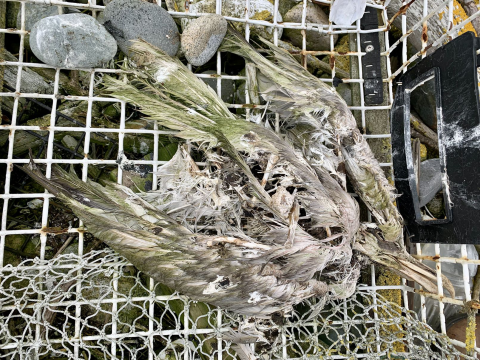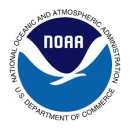Here’s the situation:
Each year, about 14 million tons of plastic enter the ocean. That’s a nearly unfathomable number, but that’s about the weight of 70,000 blue whales, which is a number higher than the actual population of blue whales remaining on earth. Of that, nearly 80% is some form of plastic (or about 56,000 whale’s worth).
This kind of debris is as wide-ranging as lobster traps, water bottles, flip flops, and micro ‘nurdles,’ tiny pieces of plastic from our polyester clothes or recycled plastic packaging that breaks down but never go away.
So many of the Service’s federal, regional, and local partners are doing important work to address marine debris impacts. You can read more about efforts by NOAA’s Marine Debris Program, the Gulf of Maine Council on Marine Environment, the Blue Ocean Society, the Center for Coastal Studies on Cape Cod, the Ocean Conservancy, and the Surfrider Foundation among others.
When it comes to wildlife impacts in the northeast, we still have so much to learn. There are currently no large-scale comprehensive studies or monitoring to track debris- wildlife impacts in the Northeast region.
In 2022, the Service released a report, focused on the Gulf of Maine, that identified the primary impacts of marine debris on birds, areas for future research, and Northeastern partners to coordinate reduction efforts.
They identified 3 primary forms of impact on birds:
- Entanglement and Entrapment
- Habitat Destruction
- Ingestion
Here’s how you can help:
FWS's report identifies 3 primary solutions to reducing marine debris and the harm it inflicts upon wildlife: curbing consumer litter, engaging community scientists, and reducing abandoned fishing gear. That means people like you and me can play a part in helping this massive issue.
Curbing Consumer Litter
> Reduce your plastic use -- bring a reusable water bottle, utensils, and bags with you. Try buying things like nuts, rice, and shampoo from package free and bulk stores that allow you to fill your own containers. Encourage your friends and family to do the same!
> Know where your waste goes! Put all trash in the trash when you’re at the beach. Recycle what and where you can.
> We can advocate for state and regional legislation that scale up these individual efforts: things like plastic bag taxes, single-use plastic bans, or even beach trashcans with predator-proof lids can help keep coasts debris-free.
>Engage in community beach cleanups: Host your own clean-up or join an existing clean up with Blue Ocean Society or search for the Ocean Conservancy’s International Coastal Cleanup.
Engaging community Scientists
> Use NOAA’s Marine Debris Tracker App, available in your App store, to help track trash on the coasts and in our waterways.
>You can also use the Blue Ocean Society’s Google Form to log your observations. Trackers like this help fill in the information gaps that scientists face in the Northeast when it comes to understanding the harms marine debris presents to wildlife.
>The Clean Ocean Society also has an app for you to record collected beach trash so that scientists can observe patterns and tackle reduction on a broad-scale. Download Ocean Swell in the App store.
Reducing Derelict Fishing Gear
>The National Fish and Wildlife Foundation’s Fishing for Energy partnership provides free disposal of derelict and tired fishing gear. They have collection bins at strategic port locations for drop off.
>Mail your discarded fishing line to Berkley Recycling or at one of their recycling collection bin sites – like those at Rachel Carson National Wildlife Refuge’s public fishing areas.
> If you’re a fisherman, bring your trash traps to Ocean’s Wide Traps 2 Treasure program. The organization takes unwanted traps, strips away aluminum funnel hoops, reuses and resells trap weights, and uses a special trap-crushing device to compress the remaining metal for recycling. The organization also leads dives to collect ghost traps at the bottom of the ocean floor. They have robust data collection on trap hotspots.
>Net Your Problem has gear recycling pathways for manufacturers, fishing boats, government agencies looking to responsibly dispose of gear and raw materials.
There is plenty happening in the Northeast and in the Service to better understand marine debris and its effects on wildlife – read more about our and our partners’ efforts below!




